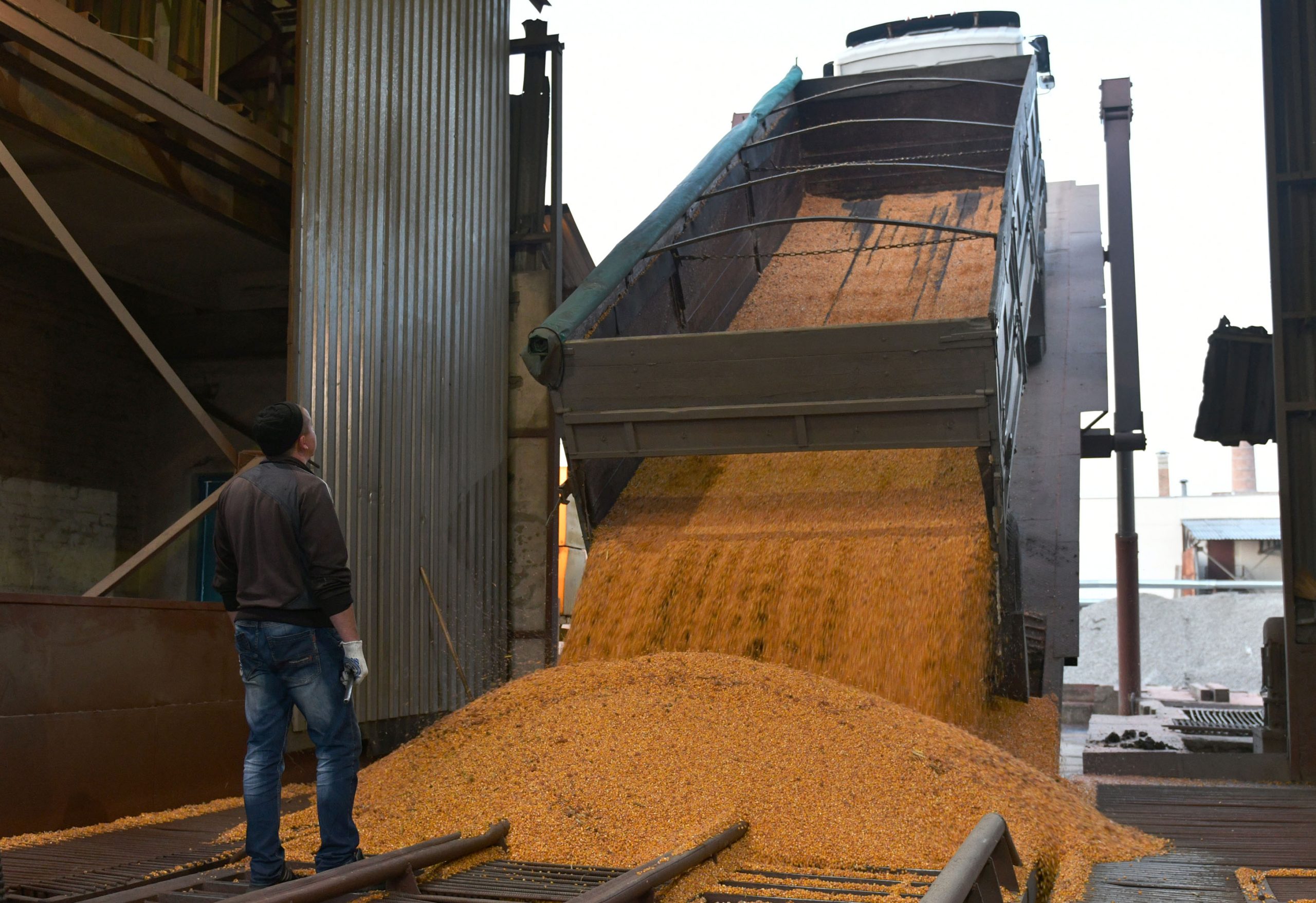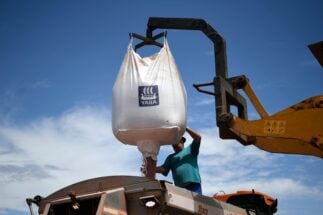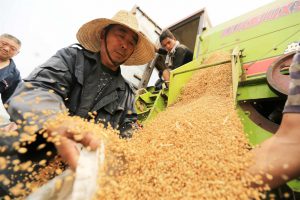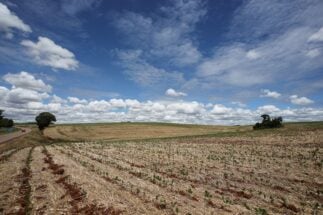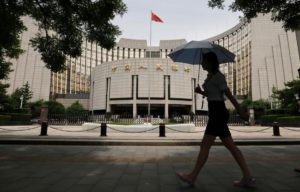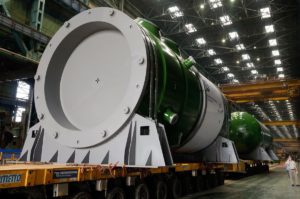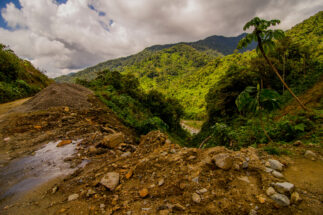Russia and Ukraine rank 11th and 55th respectively in terms of the size of their national economies, but for the global supply of critical resources such as energy, food and minerals, these two countries together are far bigger hitters – and both the threat and reality of resource flows from them being reduced have already driven up global prices.
The world is already facing a cost-of-living squeeze coming out of the Covid-19 pandemic, so further price spikes or supply constraints have the potential to seriously undermine food and energy security, equitable access to basic goods and services, and social stability around the world – which can then potentially create systemic risks for economies and societies.
The global implications of the Ukraine conflict are only just beginning to be explored fully but the immediate impacts of the crisis on global markets are already well-documented. In the first few days after Russia’s invasion of Ukraine, energy prices spiked, triggering further fertiliser price rises – as fertiliser production is highly energy intensive – which in turn is contributing to food price rises because fertiliser costs are an important factor in food production.
Further price spikes or supply constraints have the potential to seriously undermine food and energy security, equitable access to basic goods and services, and social stability around the world
Interruptions to shipping in the region around Ukraine – as well as globally – have impeded the flow of goods which pushed prices up even further, while economic sanctions on cross-border flows of goods and finance are further adding to market pressures. But this is just the start – these impacts will bring ripple effects which propagate far beyond their point of origin, known as ‘cascading risks’.
Risk is a combination of hazard, exposure, and vulnerability – in terms of the Ukraine invasion, the hazard is the conflict and its immediate impacts on the societies and economies of Ukraine and Russia, while exposure relates to the degree to which other countries are likely to be affected depending on how much they are integrated into the global economy or the ‘just in time’ nature of their supply chains.
of particular concern is the immediate supply of food because most countries rely on lean supply chains and some may only have a few days food
Vulnerability relates to a society’s capacity to mitigate the harmful impacts of the conflict, such as controlling borders, sourcing alternative goods from suppliers, or protecting against price or supply shocks.
Risk cascades – the second- and third-order impacts of the original hazard and of responses to that hazard – can interact across sectoral boundaries – as with energy and food, for example – and their compound effect can lead to overall systemic risks for society.
Anticipating this potential is essential to understanding the nature and scale of the global ramifications being felt from the Ukraine conflict. Recent work in the UK to assess levels of cascading risks resulting from a changing climate – the UK Climate Change Risk Assessment – provides a valuable framework for thinking about this area.
It examines key pathways for risk to cascade through global systems – when applied to the situation in Ukraine, these pathways and their interactions offer an indication of the scale of crisis that citizens face far beyond Ukraine’s and Russia’s borders.
Interruptions to the flows of goods and energy
In globalised trade networks, localised disruption to supply chains rapidly yields widespread international impacts – of particular concern is the immediate supply of food because most countries rely on lean supply chains and some may only have a few days food within their own borders.
25%
the approximate share of all globally traded wheat that comes from Russia and Ukraine
Experience from previous food price crises indicate even small interruptions to trade can result in runs on the market and rapid price inflation. In the case of this conflict, the trade interruption will be far from small because, between them, Russia and Ukraine export around one-quarter of all traded wheat, more than three-quarters of traded sunflower oil, and one-sixth of traded maize.
Energy markets are also a concern because many countries use more energy than they produce and therefore rely on imports of energy or fuel for domestic use. Russia produces around ten per cent of the world’s commercial energy with a concentration of sales in major regions such as the European Union (EU) and China.
As with food, a shortfall in energy provision leads to market runs and rapid inflation as actors compete in a tightening space, while poorly designed policy interventions by nations trying to ensure their own security add further pressure to global supply and worsen price rises. In addition, the closely interconnected nature of energy markets means disruption to one fuel – such as gas in this case – affects global prices for other forms of energy.
The impact of moving people and money
As the last decade richly illustrates, the cross-border flows of people impact those societies absorbing them – for example, contributing to a rise in nationalism – as well as increase the costs of supplying essential resources. Given many people are understandably fleeing this conflict, other countries may struggle to cope as the cost-of-living crisis and urgent efforts to bolster national security infrastructure may squeeze available public funds.
Financial flows are crucial to the functioning of global economies, whether for inward investment or insurance and – as Russian citizens may be about to discover – restricting the global flow of money has a serious impact on households. Beyond Russia, the outflow of money from major financial centres such as London to meet insurance claims or to enable infrastructure reinvestment post-conflict may also have severe knock-on economic impacts.
The impact on governance and health
The global spikes in energy and food prices resulting from these supply chain disruptions will see many countries struggle with rising food and energy insecurity as well as increased inequality. Taken together these conditions create many issues beyond immigration pressures and the associated politics, including increased inequality and civil unrest.
This potentially destabilises governments which has consequences for the stability of an entire region such as interrupted supply chains, the need to deploy peacekeeping forces, or significant flows of aid – all with global consequences far beyond the countries in question.
Populations may suffer mental health impacts arising from the Ukraine invasion, whether from the trauma of being forced to leave home to escape conflict, anxiety for the wellbeing and safety of families and friends caught up in it, or a more general anxiety arising from the perception of living in an unstable world.
So what can be done to mitigate these potential cascading and systemic risks?
One response is to focus on building more resilient economies and global embeddedness in trade brings opportunities that should not to be discarded.
The answer is not simply to try and build “self-sufficiency” but rather to increase, for example, functional redundancy – maintaining sufficient reserves for when just-in-time fails. This could involve more buying and storing of food when availability is good, and releasing it into the system when there is scarcity, helping to stabilise prices. Diversity in supply chains and distribution networks is also desirable, as is greater flexibility and substitutability in coping with product shortfalls.
At a societal level, resilience can also be increased by tackling vulnerabilities, particularly with social safety nets of various forms. Food and energy security are likely to increase on the back of these crises, both in the rich world and the poor. The international community must make urgent efforts now to replace possible conflict-related shortfalls, particularly in food, to ensure its availability in low-income, import dependent countries in the future.
This article is adapted from the original version published by Chatham House and is reproduced here with permission
